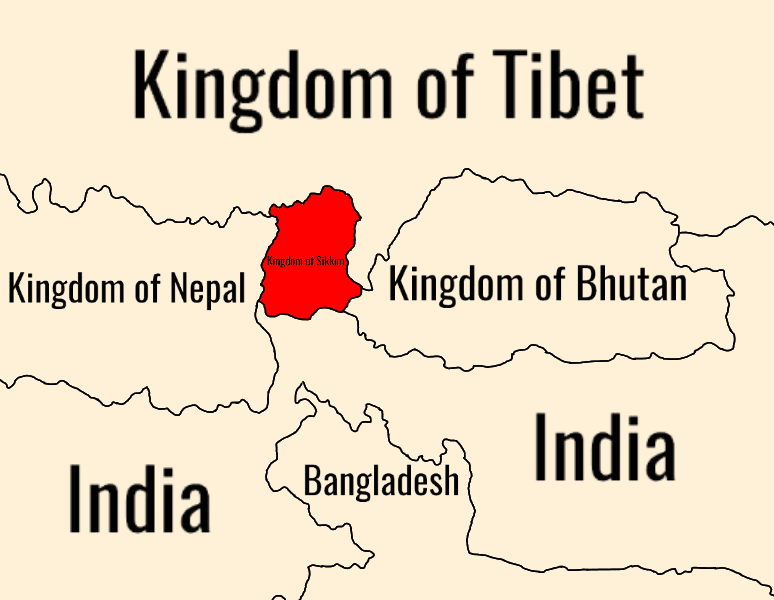An independent state from 1861 until 1975, Sikkim was a mountain kingdom high in the Himalayas, nestled between Nepal and Bhutan to the west and east and Tibet and India to the north and south.

It was a British protectorate from 1861 until just after Indian independence, when it became an Indian one. Its politics were always somewhat tense: its Tibetan Buddhist monarchy, called the Chogyal and related by blood to the monarchy of neighbouring Bhutan, ruled over a population of indigenous Lepcha people and Nepali Hindus, who had settled there when Sikkim was a British possession.
Suddenly, in April 1975 and ostensibly to protect the Hindu population, the Indian government sent in the army, slaughtered the palace guard, took over the palace, instituted a questionable referendum on the monarchy in which 97.55% of people voted to abolish it, introduced a new parliament, proposed a bill for Sikkim to become an Indian state, and then in turn accepted the proposal. Independent Sikkim was no more.